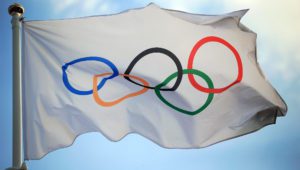We’re just a few years past the Rio Olympics, which was a thrilling spectacle for rowing enthusiasts. Now we are getting ready for the Tokyo games. Rowing is a sport that a lot of people take on in their personal lives, either for exercise or for the sake of competition. But as a spectator sport it isn’t always the most accessible option. This is really the true beauty of the Olympics. The games help to showcase less visible sports in a way that allows audiences to see the very best athletes in the world demonstrating their expertise, and converting new fans in the process.
 Sinkovic Brothers in double scull
Sinkovic Brothers in double scull
Keeping some of the Rio competitors in mind, we wanted to run through some of the big names in international rowing and go over some tips and tricks we might learn either from watching them or listening to their own words. We’ll start with some training tips from some of the UK’s own expert rowers.
George Nash
If you don’t know the name, George Nash was part of the men’s four team for Great Britain at the Rio Olympics. The team consisted of some of the best rowers on Earth, was made up of Nash, Alex Gregory, Constantine Louloudis, and Mo Sibhi rowed the perfect race, bringing home gold and turning in arguably the best performance on the water of the entire Olympics. The win also netted Britain the impressive record of being the first country to win this event five consecutive times.
For his part, Nash spoke to The Telegraph after the big Olympic win and went over several different training tips for people who might be interested in rowing themselves. It’s interesting how casual Nash comes across, discussing the importance of meals and afternoon tea, as well as playing other sports and having fun. Perhaps the most important tip he gave was to train with your teammates rather than simply strengthening your ability on your own. Teamwork and synchronisation are incredibly important at a high level, and Nash credits team training with a lot of his success.
The Sinkovic Brothers
The Sinkovic brothers are Valent and Martin Sinkovic of Croatia, who were made overwhelming favourites in the men’s Double Sculls final and lived up to the billing. Among the most dominant teams competing in Rio, the Sinkovic brothers finished more than a full second ahead of the silver medal Lithuanian team.
It’s a bit more technical, but a video analysis of the Sinkovic brothers has some pretty fascinating tips, specifically for two-person events. Most notably, the tape analysis shows elements of their technique that would make them less efficient individually, but help them to sync up their actions in an ideal way. This most notably has to do with bending the knees and letting the legs go a little bit earlier than one might do otherwise.
Eric Murray
Murray is a rower from New Zealand who won the gold in the Coxless Pair alongside Hamish Bond in Rio. Following the trend of relatively dominant gold medalists in Olympic rowing, this was their second consecutive gold, and their 69th win in as many races. It’s safe to say they have a firm grasp on their event, even if they started the race behind some of their competitors.
Murray spoke to World Rowing about how he trains on indoor rowing machines, and this might be among the most valuable advice for people who are interested in the sport themselves. He spoke a lot about his own particular training, but also made interesting notes like how training indoors eliminates the balance issues that can come in the actual boat. It’s a helpful interview in learning to understand what you can and cannot get out of indoor training.
These snippets only scratch the surface of what we can learn from expert rowers if we really take the time to read their own tips and dissect their technique. But it’s always fun to try to learn from the best of the best.




